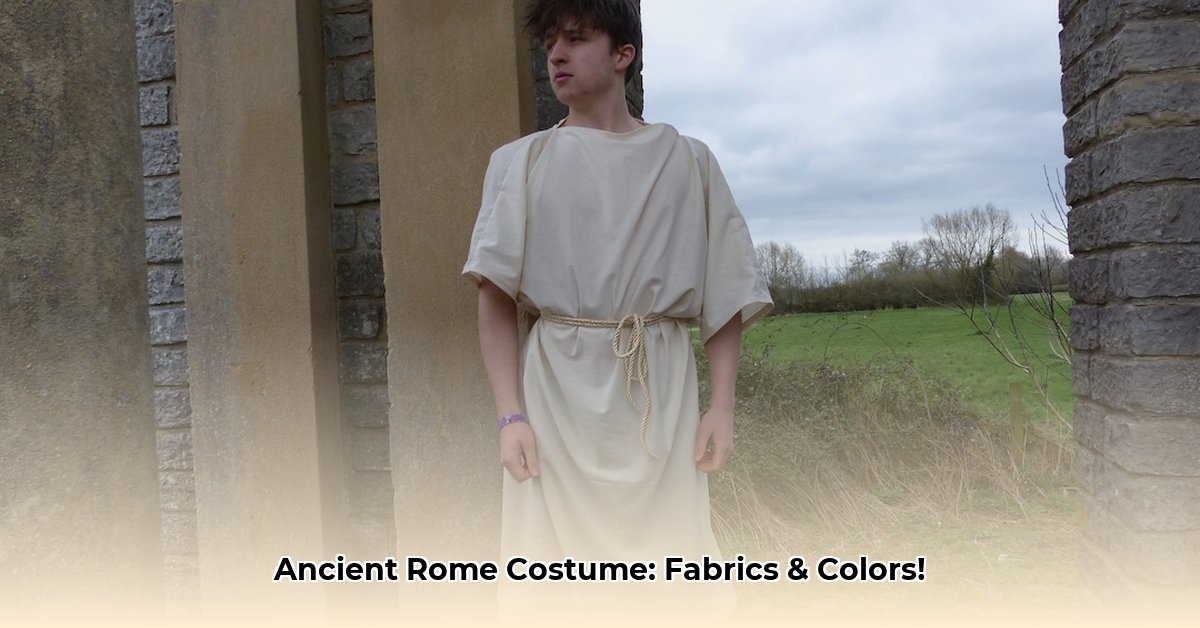Have you ever truly considered what it meant to don the attire of an ancient Roman? It was, in essence, a profound declaration; a visual manifesto of one’s standing, gender, and even political leanings within that complex society. Beyond mere covering, Roman clothing served as a potent, non-verbal language, instantly communicating a person’s identity and place in the intricate social hierarchy. This guide aims to unpick the intricate threads of Roman dress, transforming our understanding from simple historical curiosity to a deeper appreciation of its cultural significance. We’ll delve into everything from the practical textiles that clothed daily life to the iconic toga, which served as a moving billboard for Roman citizenship and privilege, exploring how these ancient styles continue to resonate in modern fashion. Are you ready to peel back the layers of Roman apparel and discover the stories woven into every carefully draped fold?
Core Insights into Roman Attire:
- Visual Communication Tool: Roman clothing powerfully conveyed social status, gender roles, and even political affiliation, acting as an instant identifier within society.
- Iconic vs. Everyday Wear: While the toga remains the most recognizable Roman garment, it was primarily a formal or ceremonial attire for citizens; the versatile tunic was the fundamental, ubiquitous garment for the vast majority of the population.
- Symbolism in Fabric and Color: Beyond basic coverage, specific garments (like the stola and palla for women) and the quality of fabrics, along with the vibrancy and type of dyes used, communicated wealth, rank, and moral standing.
- Dynamic and Evolving: Roman fashion was not static; it evolved dynamically over centuries, absorbing influences from conquered cultures and adapting to new climates and social conditions.
Decoding the Roman Wardrobe: Status Woven in Every Thread
Roman attire was never merely about modesty; it was a loud and clear form of communication that instantly hinted at a person’s standing. From their gender and place in the social order to even their political views and marital status, clothing spoke volumes. Imagine the rich, rigidly structured Roman society, where every garment, from the simplest tunic to the most elaborate toga, played a role in displaying social hierarchy. So, what specific secrets can these ancient Roman garments reveal about daily life in the empire? Let’s explore.
The Ubiquitous Tunica: Foundation of Roman Dress
Within any Roman wardrobe, the tunica (tunic) was the undisputed centerpiece. This simple, adaptable garment, most often crafted from wool or linen, served as the foundational layer for nearly all Romans, whether they were senators or enslaved individuals, and was the basic clothing for both sexes and most occupations. Think of it as the Roman equivalent of a versatile basic shirt or dress. However, its length and ornamentation varied considerably based on social standing and activity. Most working men wore knee-length, short-sleeved tunics, secured at the waist with a belt, allowing for greater freedom of movement. In contrast, wealthier citizens might display longer, more elaborately decorated versions, sometimes even full-length tunics, showcasing their affluence. Women’s tunics were typically ankle or foot-length, often long-sleeved, and could be worn loosely or belted.
What lay beneath, you might ask? Loincloths, known as subligacula or subligaria, provided a fundamental layer of modesty, worn on their own particularly by slaves engaged in hot, dirty work. For comfort and protection from cold, both sexes could wear a soft under-tunic or vest (subucula) beneath a coarser over-tunic. The Emperor Augustus, known for his delicate constitution, was said to wear up to four tunics over a vest in winter. Women also wore a breast cloth (strophium) or a breast-wrap (fascia pectoralis) similar to a modern bra. Archaeological finds, such as a 4th-century AD Sicilian mosaic depicting “bikini girls” and a Roman leather bikini bottom excavated in London, confirm the existence of tailored underwear for women during work or leisure. This foundational piece, though hidden, was an essential part of the Roman silhouette, underscoring the layered nature of their ancient Roman costume.
The Toga: A Badge of Citizenship
Now, let us turn to the iconic toga, arguably the most famous piece of ancient Roman clothing. Yet, and this is a crucial distinction, its wear was not universal. It served as an exclusive symbol, reserved solely for Roman citizens. Donning a toga was a powerful visual declaration, akin to shouting, “I am a citizen of Rome!” It signaled privilege, dignity, and belonging, making Romans known as the gens togata (“togate race”).
Fashioned from a large, semi-circular piece of wool—often some 6 feet (1.8 m) in width and 12 feet (3.7 m) in length for a standard version—the toga required considerable skill, and often an assistant, to drape correctly around the body. Its substantial weight, heat retention, and size rendered it impractical for everyday activities, hence its use was largely confined to formal public occasions such as Senate meetings, religious ceremonies, and official gatherings. Despite emperors attempting to compel its use as a marker of true Romanitas, the vast majority of citizens avoided it for day-to-day work, preferring the more comfortable tunic. The aristocracy eventually abandoned it for the more practical pallium.
Interestingly, the specific type of toga worn further communicated an individual’s status.
* A commoner’s toga virilis (“toga of manhood”) was a natural off-white. This plain white toga marked the transition of young men (around 14-17) into adulthood and full citizenship.
* The senatorial toga virilis was more voluminous and brighter.
* The toga praetexta, distinguished by its wide purple edging, was the exclusive domain of curule magistrates and certain priesthoods, underlining their authority. It was also worn by noble and freeborn boys and girls, symbolizing their protection under civil and divine law.
* Equites (knights) wore the trabea (a shorter, equestrian form of white toga or a purple-red wrap, or both) over a white tunic with two narrow vertical purple-red stripes.
* The toga pulla, used for mourning, was made of dark wool.
* The rare and prestigious toga picta and tunica palmata were purple, embroidered with gold. Originally awarded to Roman generals for their triumph, they became official dress for emperors and Imperial consuls, signifying supreme authority.
* Candidates for public office wore a toga candida, distinguished by its bright white color, achieved through bleaching.
The toga was far more than mere attire; it was a profound socio-political statement. Its increasing size among the upper classes symbolized their “honorific leisure” (otium), demonstrating that they were free from manual work and could afford to maintain such impractical garments.
Women’s Attire: Grace, Status, and Modesty
While tunics were common to both genders, Roman women’s wardrobes included distinct garments and styles that reflected their societal roles and virtues. Women generally wore a longer tunica that extended to their ankles. Married women, particularly matronae (respected married women), often wore a stola—a floor-length, sleeveless dress typically comprising two rectangular segments of cloth joined at the side by fibulae and buttons—over their tunica. This garment, associated with traditional Roman female virtues, especially modesty, signified their marital status and respectability. In the early Republic,










